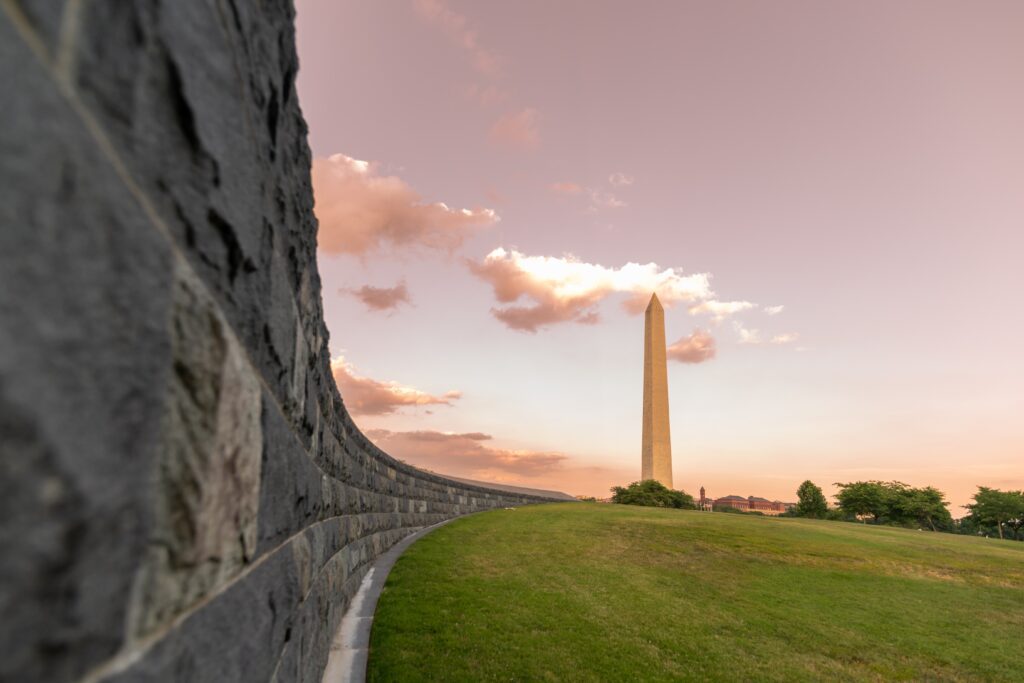Located in the heart of Appalachia, Asheville is the perfect gateway city for day trips—great for exploring, the surrounding area is filled with a myriad of sites both rich in natural beauty and full of cultural and historical significance. While there’s plenty to see and do in downtown Asheville, it’s worth hitting the road and checking out some of these nearby sites—from majestic, world-renowned mountains, to bustling, vibrant cities that offer their own unique blend of Southern hospitality and attractions that wow with their contemporary, modern charms.
Great Smoky Mountains National Park
A UNESCO World Heritage site and one of the nation’s most visited parks—Great Smoky Mountains National Park makes for an exciting day trip from Asheville for those who want to further experience the natural beauty and scenic landscapes of the Southeast United States.
Distance From Asheville: 84.3 miles
Estimated Driving Time: 2 hours
How To Get There: I-40 W to TN-32 N and US-321 to the Sugarlands Visitor Center in Gatlinburg, TN
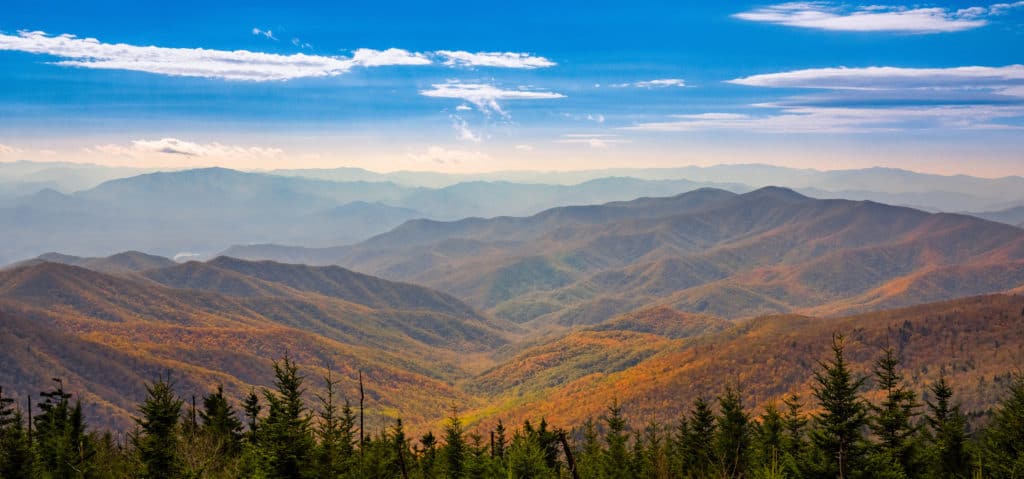
The Sugarlands Visitor Center is the closest access point to the Great Smoky Mountains from Asheville. This gateway to the park is the ideal spot for visitors to begin their exploration of the Great Smoky Mountains, as there is access to plenty of the park’s most iconic natural attractions for those who want to spend anything from a couple of hours to an entire afternoon. This is also a great spot to pick up maps, guides, and brochures that will help to make navigating the park a snap.
There are a plethora of scenic waterfalls to explore in the Sugarlands area. One of the area’s most popular waterfalls is located just behind the visitor’s center, so be sure to make it your first stop. Cataract Falls, known as one of the best-kept secrets in the Smoky Mountains, is a less than one-mile family-friendly trail that is both tranquil and relaxing. The well-maintained gravel trail is both easy to access and ideal for families, as it is not too strenuous and there are plenty of fun things to see along the way to the 25-foot high waterfall. There is also an additional nature trail branching off the footbridge on the way to Cataract Falls, so those who want to add to their hike can branch off here before completing the loop.
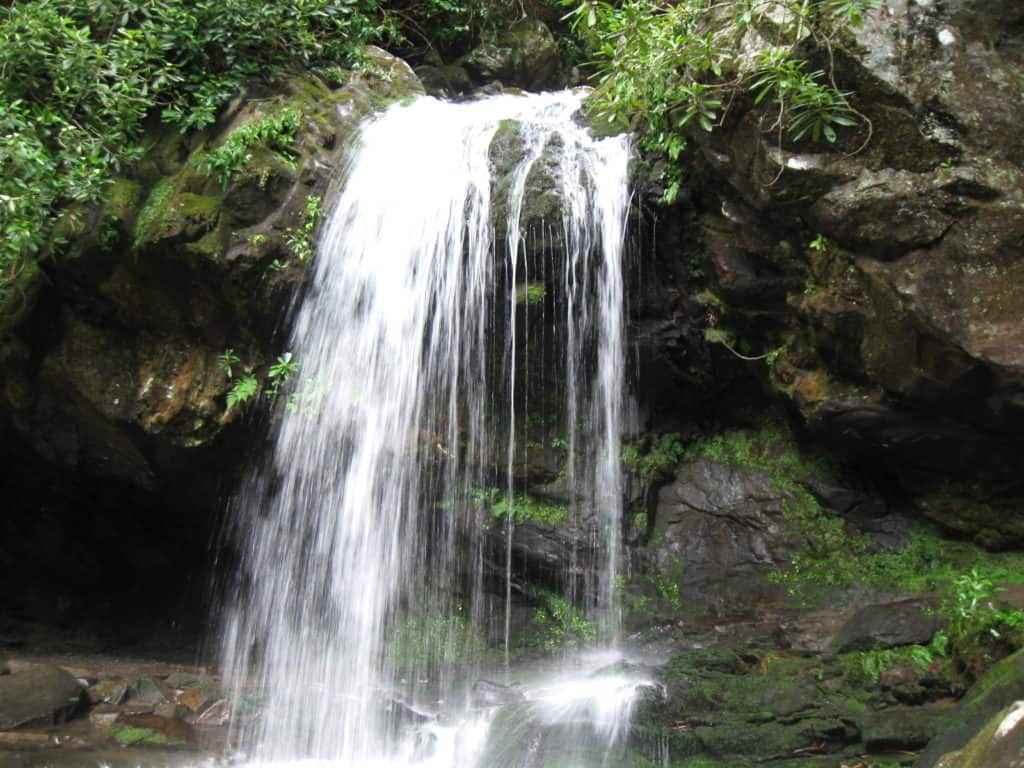
Another popular area waterfall is Grotto Falls. Just a ten-minute drive from Sugarlands, Grotto Falls is accessible via the Trillium Gap Trail on the Roaring Fork Motor Trail. The roundtrip distance to the waterfall is approximately 2.6 miles and is considered moderate because of its narrowness and rocky, winding path—however, it’s well worth it to get a glimpse of the beautiful 25-high waterfall tucked away among a sandstone cave (hence the name ‘grotto’). The trail is lined with beautiful local trees including hemlocks and is a great spot to scope area wildlife.
How To Get There: From the parkway near Sugarlands, follow the signs for the Historic Nature Trail into Great Smoky Mountains National Park. Travel on the Roaring Fork Motor Trail to Stop #5 where there is a parking area. After a hike to Grotto Falls, visitors can take the Roaring Fork Motor Trail for a scenic drive into the heart of the forest. The 5.5-mile winding road is a great way to get a glimpse of some more stellar natural scenery, along with some of the area’s historic buildings. Want a little more area history? Take a short walk on the Noah “Bud” Ogle self-guided trail, a walking tour of a nearby authentic mountain farmstead.
Cades Cove
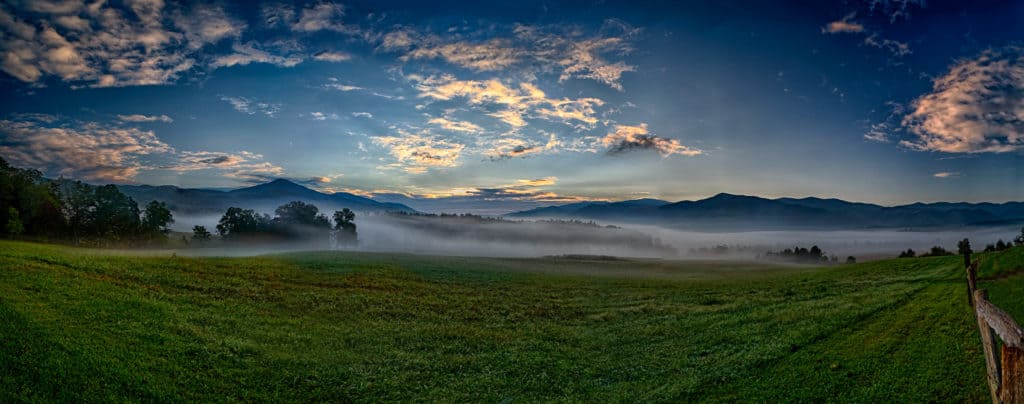
A beautiful, green valley surrounded by the nearby towering mountains make for some lovely scenic viewing. The area also has a number of historic structures and is ideal for wildlife spotting, as deer, turkeys, and bears can all be found here. There are also numerous hiking trails for those who want to do further exploring on foot.
Distance From Sugarlands: 29.7 miles
Estimated Driving Time: Just over an hour
How To Get There: Little Gorge Rd/Old State HWY 73 to Laurel Creek Rd., which then becomes Cades Cove Loop Rd.
Cligman’s Dome
Take a trip into the higher elevations with a scenic drive up the mountains to Clingman’s Dome, the highest point in Tennessee, and the third-highest mountain east of the Mississippi River. Along the way, there are multiple places to pull over and soak up the amazing views of this diverse mountain ecosystem; and upon arriving at Clingman’s, there are several trails—including one to the summit’s observation tower offering panoramic views of the Smokies and the surrounding countryside.
Distance From Sugarlands: 20.5 miles
Estimated Driving Time: 45 minutes
How To Get There: Fighting Creek Gap Rd. to US-441 S, turn right onto Clingmans Dome Rd. Stop at Chimney Picnic Area along the way to have lunch and check out Cove Hardwood Forest—one of the most diverse areas in the park.
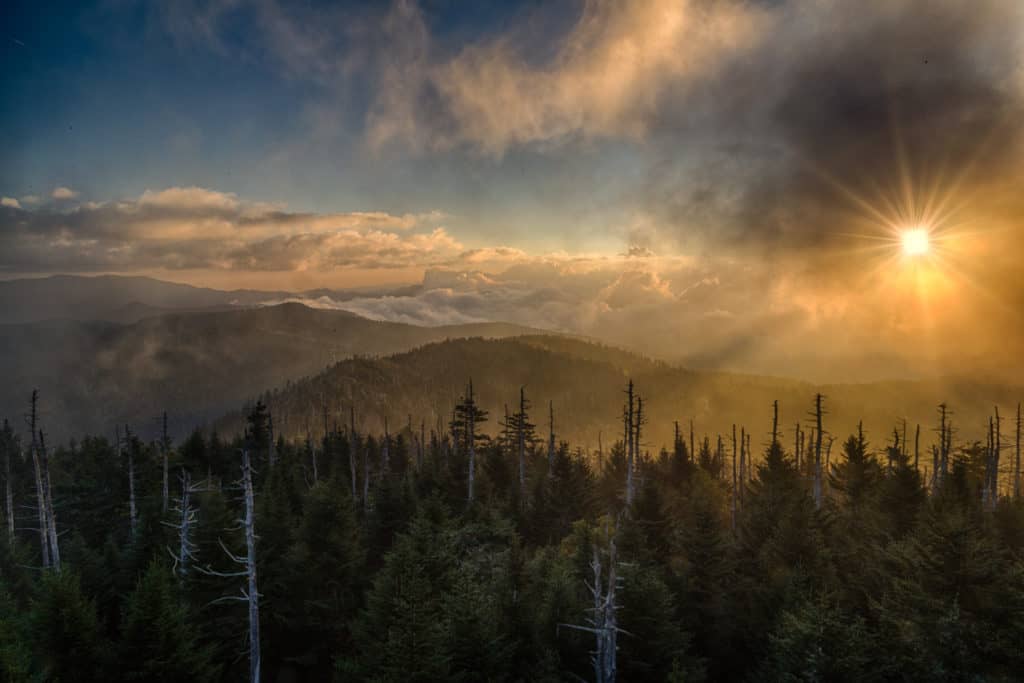
Native American Culture and History Are Alive In Cherokee
For those who want to learn more about the area’s Native American history, heritage, and traditions, Cherokee is the perfect day trip. A small town in North Carolina, Cherokee it is due west of Asheville and accessible via the scenic Blue Ridge Parkway.
Proud of its distinctive culture and heritage, Cherokee is the capital of the Eastern band of the Cherokee Nation and part of the Cherokee people’s traditional homeland— and there are plenty of ways to learn about its enduring history on a day trip from Asheville.
Located at the entrance to the Great Smoky Mountains National Park and at the southern end of the Blue Ridge Parkway, Cherokee is also incredibly scenic and has its own lovely natural landscapes to explore. The drive west is also filled with its own share of the beautiful scenery of the surrounding mountains and tree-filled valleys.
The history of the Cherokee culture is rich, diverse, and can still be seen and felt to this day by exploring the town of Cherokee. The Cherokee Historical Association is the cornerstone of Cherokee heritage in the area, and has several options for discovering the region’s rich cultural history. The Cherokee Historical Museum has two main cultural attractions that are a great way to learn about the area—the Oconaluftee Indian Village, which transports visitors back in history to an 18th century Cherokee village, and “Unto these Hills,” an outdoor drama that explores the story of the Cherokee tribe from past to present. The Museum of the Cherokee Indian is another popular spot for visitors to learn about the 11,000-year-old Cherokee history; a cultural and historical tour that prides itself on being an experience as unique as the Cherokee people themselves. Other historical sites worth exploring are Mingus Mill and the Mountain Farm Museum, both known for their rich history and carefully preserved buildings that tell the story of mountain families that once lived in the area.
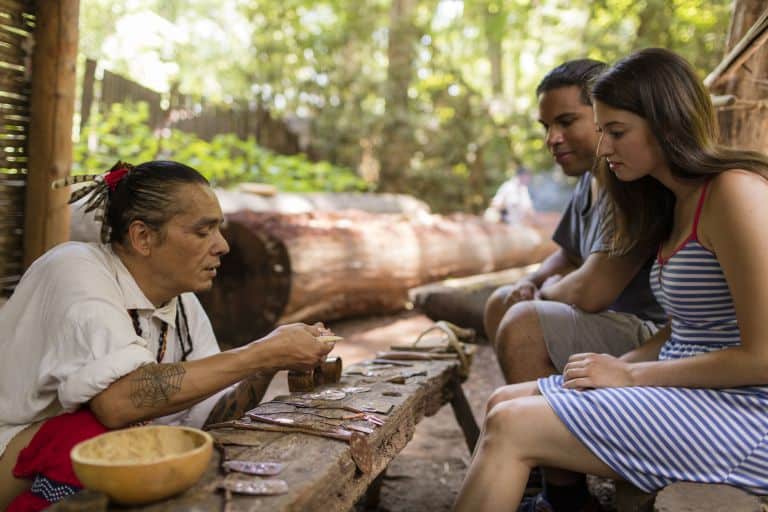
Mingus Mill is not only known for its historic landmarks; it’s also the home of numerous local hiking trails where visitors can immerse themselves in the natural world of these historic Native American peoples. Two popular trails are the Oconaluftee River Trail, an easy 1.5-mile trail that follows the river; and the Mingus Creek Trail, which climbs upward past several historical sites into the high country of the Smoky Mountains. There are many other scenic spots where visitors can get lost in the natural beauty of Cherokee and experience a bit of history along the way. Soco Falls is a tranquil spot known as a resting place in the heart of Cherokee. A double waterfall awaits visitors who make the trek on the short, steep trail that ends at a viewing deck where travelers can bask in the beauty of the falls. Mingo Falls is another stunning local waterfall that is the stuff of Cherokee legend. Measuring 120-feet tall, Mingo is one of the tallest and most beautiful waterfalls in all of the Southern Appalachians. Judaculla Rock lies at the intersection of Cherokee history and the area’s scenic natural beauty. A sandstone boulder carved with Cherokee petroglyphs, Judaculla is a significant Cherokee landmark that may have once served as the boundary to Cherokee hunting grounds. The rock is listed on the National Register of Historic Places and is worth seeing for anyone looking for a deeper understanding of Cherokee culture.
Total Distance (non-stop): 24 miles
Distance From Asheville:
Estimated Driving Time: 3 hours
How To Get There: Take the Blue Ridge Parkway from Asheville (MP 382) to Cherokee (MP 469); there are alternate ways to go that take approximately half the time, but are far less scenic.
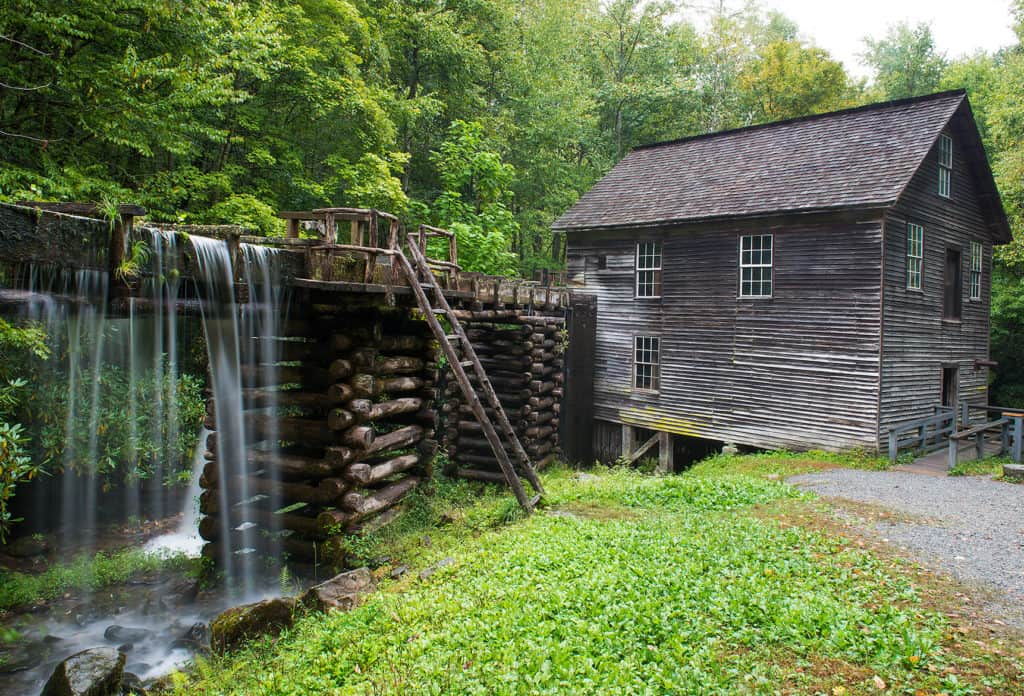
City To City: Asheville to Charlotte
Want to immerse yourself in a city that is both exciting and welcoming? Charlotte, North Carolina is the state’s largest city; however, don’t let its size fool you. The city is relaxed and pedestrian-friendly, with plenty of exciting local attractions that make it one of the fastest-growing tourist destinations in the South.
There is plenty of history to be found in the Queen City of Charlotte. Historic Rosedale has been a part of the city’s history since the early 19th century. The site is home to a beautifully restored house, lovely curated gardens, and a recreated blacksmith shop where visitors can go back in time and learn about the area’s rich history. Continuing the theme of historic buildings in Charlotte, The Historic Fourth Ward Neighborhood is a charming spot to immerse yourself in the city’s history. Filled with stunning Victorian homes and a plethora of dining, shopping, and cultural attractions, the Fourth Ward is a microcosm of Charlotte that perfectly highlights its place in the past, present, and future. The Levine Museum of the New South strives to connect the area’s past to its future while striving to embrace the promise and potential of the new south. Through its interactive and immersive exhibits that aim to educate and inspire, the museum has been a keystone of Charlotte’s close-knit community for 30 years.

Sports lovers will feel right at home in Charlotte—home to both the Hendrick Motorsports Complex and the NASCAR Hall of Fame, fans of motorsports will be in their element as they explore these two exciting museums. Hendrick’s is also only five minutes away from Charlotte Motor Speedway, so visitors may even be able to catch a race afterward. Other sports fans will love exploring the city’s Third Ward, home to The Bank of America Stadium and BB&T Ballpark.
The Third Ward is also home to the Mint Uptown Museum, for those who favor art over sports. Home to impressive collections of American, contemporary, and European art, the five-story building is a work of art itself—a standout in Charlotte’s rapidly developing city center.
Spending the day in Charlotte means trying out some of the city’s eclectic and diverse culinary options. Like the city itself, Charlotte’s restaurant community is continuing to grow and thrive, with plenty of options for foodies who want everything from high-end fusion experiences to more casual, delicious fare.
Fancy a beer and burger before the ballgame? Then head to Ace. No. 3 in Myers Park, voted ‘Best Burger’ by Charlotte Magazine in 2020 and 2021. Local brews and mouth-watering burgers (including the famous ‘Ace burger’), make this casual spot worth a look while in Charlotte. Discerning foodies and lovers of five-star cuisine will revel in the New American Cuisine at Barrington’s. run by a Native New Englander, the restaurant prides itself on its Northeastern influence that elevates Southern culinary traditions for a fusion made in heaven. A menu full of soulful Southern delights meets an atmosphere that is fun, vibrant and welcoming at 7th Restaurant & Lounge. Located in the First Ward of Uptown Charlotte, 7th is a great spot to mix and mingle while enjoying a signature cocktail and delicious menu filled with Southern goodies like Shrimp and Grits. Abugide Ethiopian Cuisine is a local gem with a warm, welcoming environment and an incredible menu featuring Ethiopian favorites like Kitfo and Gomen (Ethiopian collard greens). The perfect place for those who want to try something new, and a perfect example of Charlotte’s diverse food scene
Distance From Asheville: 130.1 miles
Estimated Driving Time: 2 hours, 15 minutes
How To Get There: Get on I-240 E from Market St. in Asheville. Follow I-40 E, US-321 S, and I-85 N to west 11th St. in Charlotte

Though Asheville is full of exciting things to see and do, the surrounding areas have their fair share of natural beauty; cultural and historical significance; and bustling, city atmospheres that are worth exploring. Taking a day trip from Asheville is a greenway to experience the area’s diversity and scenic sights while on the road to any of the above destinations—so get in the car, hit the highway, and soak in the sights on an exciting day trip adventure to explore the distinctive and dynamic southeast.


